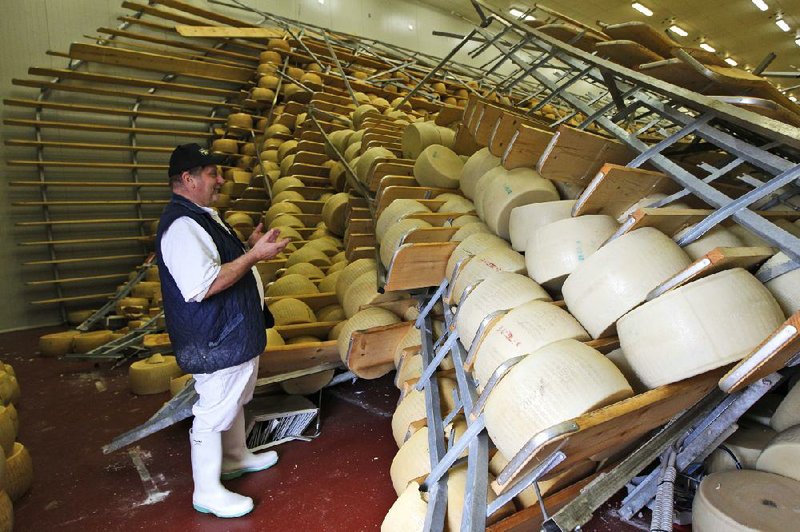ROME — Firefighters, surveyors, engineers and volunteers struggled through nearly continuous aftershocks Monday to catalog damage and deter looters one day after an earthquake killed seven people and left more than 6,000 homeless in the Emilia-Romagna region of northern Italy.
More than 120 aftershocks rocked the area in the hours after the magnitude-6.0 earthquake, which toppled factories, apartment buildings, and medieval and Renaissance-era monuments early Sunday. The epicenter was a small town between the art-rich cities of Modena and Ferrara. The area had not been considered at high risk for earthquakes, leading officials to call for revisions to the country’s risk map.
The president of Emilia-Romagna, Vasco Errani, said in a television interview that it was too soon to determine the economic costs of the earthquake.
“They will be very significant, between our cultural heritage and businesses and housing, but we prefer to wait until we have more complete data,” he said.
An early estimate of $250 million worth of damage - made by Coldiretti, an agricultural trade association - included 400,000 wheels of Parmesan and Grana Padano cheese that were destroyed when the shelves on which they were aging collapsed. The cheese is a principal export of Emilia-Romagna.
Total agriculture losses, including lost cheese, felled livestock and damaged machinery in an area spanning Bologna, Modena and Mantova in the agriculturally rich Po River Valley, are estimated at $254 million.
“Considering that what you see here represents the work of seven companies for two years, this means that the repercussions on the rural economy of these farms and this territory will feel it pretty badly,” Oriano Caretti, a cheese producer, said Monday inside the cheese factory next to his home, where wooden shelves were still collapsed from the quake. Only one rack of 16 remained standing.
Many of the wheels looked unscathed, but workers were still trying to determine what could be salvaged before mold sets in.
Teams of experts coordinated by the Culture Ministry began to assess churches, towers and other historic buildings, including the Ducal Palace in Mantua, which suffered damage, although not to the famed frescoes by 15th-century painter Andrea Mantegna. Thousands of structures must be painstakingly examined to determine whether they might collapse.
Volunteers patrolled the streets in front of abandoned buildings to deter would-be looters.
“The immediate priority is to determine who can return to their homes,” said Fabrizio Toselli, the mayor of Sant’Agostino, a town of 6,000.
A vast gaping hole in the front wall of its town hall has become a defining image of the earthquake’s devastation.
Toselli said that he spent the night with about 250 people in a makeshift dormitory in the civic sports center, and that many others slept in their cars.
“Their homes may be safe, but they’re still very afraid, so many decided to sleep outside,” he said.
Donations from various parts of Italy have been used to create several scattered tent camps to house the more than 6,000 people who for the moment cannot sleep in their homes, according to official numbers.
Italy’s Civil Protection Department responded quickly to the emergency, and Luigi D’Angelo, a senior official with the department, said that local mayors had also acted promptly and effectively, in accordance with the national emergency management system drafted to deal with natural disasters.
“Mayors did their part, and that is important in these situations,” he said.
In 2009, a major earthquake in L’Aquila, in the central Abruzzo region, caused more than 300 deaths and devastated entire towns, including the art-rich regional capital. The earthquake Sunday was easier to manage, because rescue teams were able to focus on clearing rubble, rather than digging for survivors.
“They were two different experiences with different levels of damage,” D’Angelo said. “But in both cases rescue operations intervened immediately.” Information for this article was contributed by Elisabetta Povoledo of The New York Times; and by Alberto Arsie, Colleen Barry, Pietro De Cristofaro and Nicole Winfield of The Associated Press.
Front Section, Pages 5 on 05/22/2012
